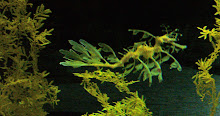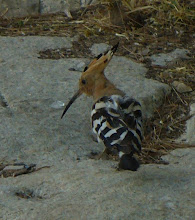Researchers at the University of Western Ontario in Canada have proven that bumblebees can sense the length of time passing. A study in which bumblebees were trained to expect food rewards after intervals of a few seconds was published this month in the journal Current Biology by Michael Boisvert and David Sherry.
In the wild, bumblebees are known to visit renewing nectar sources repeatedly to feed, so the scientists suspected they had some mechanism for sensing time durations. They trained groups of the bees to expect food (an artificial nectar solution) 6, 12 or 36 seconds after a light was turned off in their enclosure. The bees were tested individually and responded after an appropriate interval by extending their mouthparts into the nectar tube to drink. By varying the intervals –for example alternating randomly between 6 second delays and 36 second delays during training- the scientists showed that the bees could learn to time for 2 different durations simultaneously- typically they would respond either by attempting to feed between the 2 correct time intervals or in 2 flurries of activity, making attempts to feed around the correct time for the shorter duration and then again around the correct time for the longer duration.
Michael Boisvert and David Sherry's bumblebee study was published in Volume 16 (No16) of the journal Current Biology.
Sunday, 27 August 2006
Saturday, 26 August 2006
Oily Bacteria- Science News
An international team of scientists has sequenced the genome of the first oil-slick digesting germ, raising hopes that the microbe's secrets can be used to help clean-up oil spills. The germ: a bacterium called Alcanivorax borkumensis: was only discovered in 1998, but is almost certainly the most important microbe for breaking up oil-slicks. A. borkumensis is found in oceans worldwide, but exists only at very low levels in unpolluted water. Once oil is released into the ocean, however, it multiplies rapidly and soon becomes the most common organism around an oil-slick. This remarkable efficiency has always puzzled scientists, so it was selected as the first bacterium of its kind to have its complete DNA sequence read.
The research, by Susanne Schnieker of the University of Bielefield, Germany and her colleagues, revealed that the bug harbours an abundance of genes for digesting the various hydrocarbon compounds found in crude oil. The scientists also found the germ had genes for biosurfactants: natural detergents that break oil up into smaller droplets and therefore speed its degradation. They also found genes allowing A. borkumensis to scavenge micro-nutrients, such as iron, cobalt and magnesium, from the sea water. A lack of micronutrients is often the limiting factor that restricts bacterial growth around an oil slick, so A. borkumensis's exceptional nutrient scavenging ability goes some way towards explaining its unusual success. The researchers believe that several of the organism's genes that they have uncovered could be used by man for various biotechnological applications, including cleaning up oil-slicks and separating chemical mixtures.
Schneiker and colleagues' research was published in volume 24 (issue 8) of the journal Nature Biotechnology.
The research, by Susanne Schnieker of the University of Bielefield, Germany and her colleagues, revealed that the bug harbours an abundance of genes for digesting the various hydrocarbon compounds found in crude oil. The scientists also found the germ had genes for biosurfactants: natural detergents that break oil up into smaller droplets and therefore speed its degradation. They also found genes allowing A. borkumensis to scavenge micro-nutrients, such as iron, cobalt and magnesium, from the sea water. A lack of micronutrients is often the limiting factor that restricts bacterial growth around an oil slick, so A. borkumensis's exceptional nutrient scavenging ability goes some way towards explaining its unusual success. The researchers believe that several of the organism's genes that they have uncovered could be used by man for various biotechnological applications, including cleaning up oil-slicks and separating chemical mixtures.
Schneiker and colleagues' research was published in volume 24 (issue 8) of the journal Nature Biotechnology.
Labels:
Alcanivorax,
bateria,
biotechnology,
borkumensis,
clean-up,
DNA,
oil,
Oil-slick,
Schneiker
Friday, 25 August 2006
Nutty Chimps- Science News
Primatologists studying chimpanzees often talk about examples of chimps using forest objects as tools, with one of the most famous examples being their use of rocks to crack nuts. This tool-use is considered a kind of culture, because there are regional variations in it and because young chimps learn to use the tools from the adults. Until this month, the "nut-cracking culture" had only ever been found in chimp troupes in Western Africa, specifically west of the river N'Zo-Sassandra in the Ivory Coast. It was thought that the river was a barrier, preventing the knowledge spreading to chimp groups further East. Research published in the journal Current Biology this month, however, overturns this idea.
The scientific paper, by Bethan Morgan and Ekwoge Abwe, reports nut cracking behaviour in the endangered chimpanzee subspecies, Pan troglodytes vellerosus, which is restricted to Western Cameroon and parts of Nigeria: some 1700km East of the N'Zo-Sassandra river. In the study, conducted in Cameroon's Ebo forest, the researchers observed 3 adult chimps sitting in the branches of the "Tigerwood", or "Gabon nut" tree and using rocks to crack the nuts. The tree has red or green coloured nuts, which are similar in shape and size to walnuts and have exceptionally tough shells. One of the chimps, realising he was being watched, dropped his tool: a grape-fruit sized lump of quartz: to the ground as he fled and the researchers found other discarded rocks and nut shells on the surrounding forest floor.
The fact that this behaviour has been found in a population so far removed from the others overturns existing wisdom and suggests that the nut-cracking behaviour has arisen separately in many chimp populations throughout Africa. Alternatively, it may be an ancient pan-African chimp "culture" that has been lost by the populations between Ebo forest and the N'Zo-Sassandra river.
Bethan Morgan and Ekwoge Abwe's study of chimpanzees was published in Volume 16 (No16) of the journal Current Biology
The scientific paper, by Bethan Morgan and Ekwoge Abwe, reports nut cracking behaviour in the endangered chimpanzee subspecies, Pan troglodytes vellerosus, which is restricted to Western Cameroon and parts of Nigeria: some 1700km East of the N'Zo-Sassandra river. In the study, conducted in Cameroon's Ebo forest, the researchers observed 3 adult chimps sitting in the branches of the "Tigerwood", or "Gabon nut" tree and using rocks to crack the nuts. The tree has red or green coloured nuts, which are similar in shape and size to walnuts and have exceptionally tough shells. One of the chimps, realising he was being watched, dropped his tool: a grape-fruit sized lump of quartz: to the ground as he fled and the researchers found other discarded rocks and nut shells on the surrounding forest floor.
The fact that this behaviour has been found in a population so far removed from the others overturns existing wisdom and suggests that the nut-cracking behaviour has arisen separately in many chimp populations throughout Africa. Alternatively, it may be an ancient pan-African chimp "culture" that has been lost by the populations between Ebo forest and the N'Zo-Sassandra river.
Bethan Morgan and Ekwoge Abwe's study of chimpanzees was published in Volume 16 (No16) of the journal Current Biology
Labels:
Abwe,
chimpanzee,
Current Biology,
Morgan,
tool use,
Western Africa
Subscribe to:
Comments (Atom)








